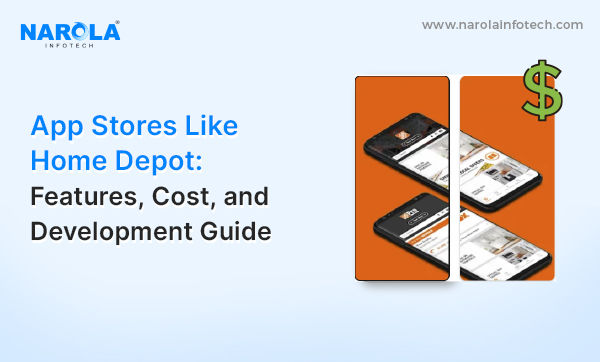Top Application Modernization Challenges and Solutions
- NarolaInfotech

- May 16, 2024
- 3 min read
Technology is advancing so quickly that legacy applications frequently find it difficult to adapt to new requirements, which creates inefficiencies and inhibits creativity. But updating applications has its own set of difficulties.
We'll discuss the typical application modernization problems that companies like yours may run into in this blog and offer solutions.
What is Application Modernization?
Application modernization is the process of modernizing legacy applications to suit current business requirements while leveraging modern technology, architectures, and techniques.
There are several methods for modernizing applications, including restructuring, re-platforming, containerization, microservices architecture, technology stack upgrades, cloud adoption, and enhanced UI/UX.
By updating your old systems, you may increase agility and innovation, improve security, scalability and performance, and save maintenance costs and technical debt.
Top Application Modernization Challenges

1. Legacy Infrastructure and Technologies
Legacy systems frequently rely on obsolete infrastructure and technology, which are difficult to maintain and integrate with contemporary solutions. Migrating these systems to cloud settings or implementing microservices architectures can be difficult due to compatibility difficulties and dependencies.
Solution:
Get code analysis tools that help uncover flaws, dependencies, and improvement opportunities.
Take the phased modernization approach and refactor important functions and modernize the system component by component.
Use popular open-source libraries to speed up and improve programming.
2. Data Migration and Integration
Modernizing applications necessitates a seamless movement of data from legacy systems to new platforms while maintaining data integrity and availability. Data migration problems stem from disparities in data formats, schemas, and storage technologies between legacy and current systems. Integrating different systems, guaranteeing data consistency, and managing data loss are all potential issues.
Solution:
Map old and new system data to guarantee a smooth transition.
Clean and transform data to ensure integrity and interoperability with the new environment.
Start with non-critical data and migrate to sensitive data in phases.
3. Business Disruption and Downtime
Unplanned and executed application modernization projects can interrupt business operations and cause downtime. Transitioning from legacy to contemporary systems may cause service outages. This might cause downtime and data loss, lowering productivity and customer satisfaction. Mitigating risks and preserving business continuity requires minimizing downtime and smooth transitions.
Solution:
Implement changes in stages to reduce interruption and allow for testing and rollback if needed.
Communicate the modernization plan clearly to all stakeholders, keeping them updated on any disruptions and timescales.
Create a comprehensive disaster recovery strategy to ensure business continuity in the event of unforeseen challenges.
4. Skill Gaps and Resource Constraints
Modernizing applications frequently necessitates specific knowledge and expertise in emerging technologies such as cloud computing, DevOps, containerization, and automation. However, many firms have difficulty recruiting or upskilling their workers to meet the expectations of modernization programs. Limited resources and budget constraints exacerbate skill gaps and impede advancement.
Solution:
Invest in training programs to provide your current developers with the skills required for modernization initiatives.
Collaborate with consulting firms or service providers who specialize in application modernization.
Use open-source communities to share expertise, solve problems, and maybe find new talent.
5. Security and Compliance Risks
Legacy applications are more susceptible to security vulnerabilities and compliance issues due to obsolete software, weak security, and regulatory restrictions. Migration to modern architectures raises identity management, data privacy, and cloud security issues. Modernized applications must be secure and compliant to protect sensitive data and comply with regulations.
Solution:
Modernize with security in mind from planning to deployment and maintenance.
Regularly analyze legacy system vulnerabilities before migration.
To secure sensitive data, use multi-factor authentication, role-based access restriction, and data encryption.
To ensure regulatory compliance, align modernization with SOC 2 or HIPAA guidelines.
Partner with cloud security professionals that know your cloud platform's security controls.
DevSecOps helps detect and fix vulnerabilities early in the development process.
Perform regular security audits after modernization to identify and resolve new security threats.
6. Cloud Migration Costs
Licensing, data transfer, and continuing cloud service fees can all add up to significant costs during a cloud move. Optimizing cloud resource use is critical, as leaving idle virtual machines running might result in excessive costs. Additionally, egress fees, which are charged for data transported out of the cloud, can quickly accumulate.
Solution:
Collaborate with cloud providers to identify cost-effective alternatives such as reserved instances or spot pricing.
Use cloud resources efficiently to avoid paying for idle capacity.
Consider a hybrid cloud solution, in which some applications are kept on-premises while others are moved to the cloud.
Keep in mind that the most important thing is not to completely get rid of obstacles; rather, it is to anticipate them, have methods in place to deal with them, and prioritize effective communication and planning throughout the implementation process. It will be possible for you to effectively modernize your apps and contribute to the ongoing success of your firm if you proceed in this manner.




Comments